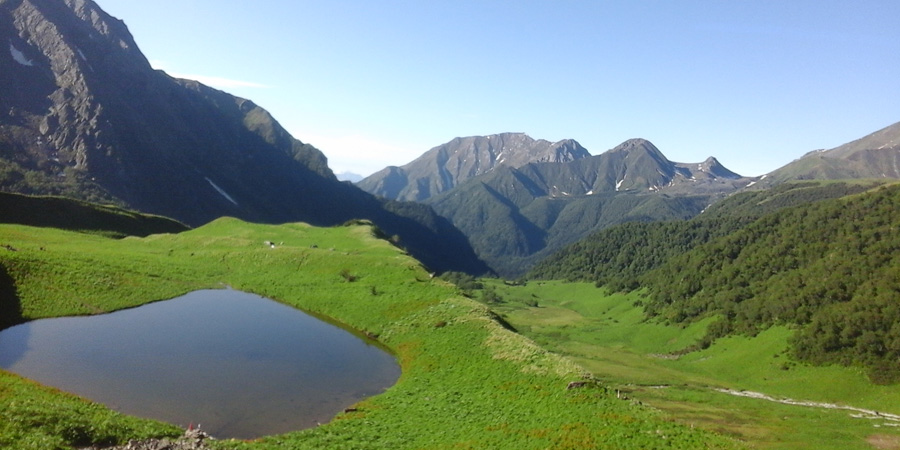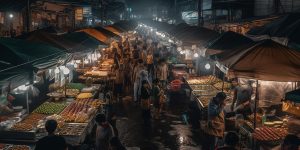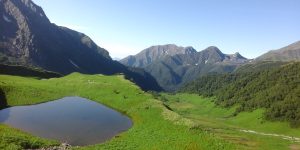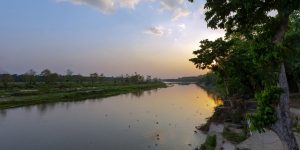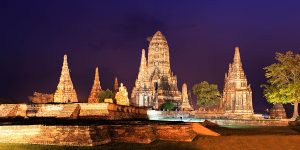Travel is a great teacher. Encountering new landscapes, people and cultures introduces one to the variety life offers and broadens one’s perspective. On a recent field trip to Sudur Paschim aimed at identifying champions for freshwater policy change and conservation of aquatic biodiversity in the Karnali, Mahakali, and West Rapti river basins, we made Bajhang our base and travelled through Dhangadi, Dadeldhura, and Baitadi. The following is a collection of my thoughts as we travelled through the region.
Nature
Before embarking on our trip to the Far West, I was anxious about the journey that would take me down rough, winding roads going up and down the hills of Nepal. My initial anxiety stayed with me throughout the trip as our vehicle made its way through narrow roadways that led to diverse destinations every day. What was common about these roads was that on one side they dropped down to deep slopes that had rivers or dense forests beneath them. Despite my anxiety, I decided to enjoy the breathtaking views ‘Sundar Sudur Paschim’ had to offer.
The entire journey was filled with glorious close-up views of clear blue skies dotted with light patterns of clouds that always cheered me up, gigantic hills and mountains that were intimidating but comforting at the same time, and continually flowing rivers that reminded me to keep moving forward and leave the past behind. Being so close to the constantly evolving natural setting, I found myself agreeing with quotes I had read that explained how nature helps us understand that change is constant and therefore, the present moment needs to be cherished and enjoyed.
People and Place
During our trip, we visited municipalities and rural municipalities in the southern and northern parts of Bajhang and interacted with local communities there. All these locations were very different from each other, some were emerging urban areas and others were remote villages. During many of the any interactions, locals raised the issues of poor governance and unplanned urbanization, which were familiar to me because of similar experiences/observations in Kathmandu.
Few of the interactions with local communities, however, made me realize how ignorant I was about the natural systems around me. When we discussed the rivers, forests, agriculture, irrigation systems, rainfall and snowfall patterns, I discovered how observant these communities were about these systems and phenomena. I tried to justify my lack of knowledge with the rationalization that the direct dependency of these communities on nature for their livelihoods made them more attentive tot natural processes. However, I also realized that we are all related to nature in one way or another and that environmental deterioration is bound to affect us all. Contributing to conservation efforts, therefore, falls within everyone’s purview.
My Thoughts
As this was my first trip to Bajhang, I did not know what to expect during my stay there; some of the things I was prepared for were the unavailability of attached bathrooms in hotels, lack of internet service, long walks instead of car rides to reach interviewees, shops and health posts at a distance from the hotel. To my surprise, all these things were available at Chainpur–the district headquarter of Bajhang. The emerging municipality was thriving with shops (stocked with imported clothes, mobiles, stationery, liquor), salons, hotels and new constructions. Kathmandu must have been similar in its early phase of urbanization. Hopefully Chainpur will learn from the mistakes of the capital city and prepare a sound plan for its growth.
Unlike Chainpur, most villages in Bajhang lacked basic life support services such as clean drinking water, electricity, quality education and good infrastructure. In the villages, I was constantly drawn to the children; they were full of joy–playing different games, walking to school in groups, eating instant noodles, warming themselves by the fire. They seemed well adapted and comfortable in their surroundings. Seeing them rejoice over their daily activities in (what was labelled as) one of the least developed districts, I wondered, ‘What are their aspirations in life and what/who are they influenced by?’ These inquisitions, unfortunately, remain unanswered. The people of Bajhang are working towards increasing their access to basic services and gradually developing their communities. In this process, I hope they can avail these services while continuing to share a close relationship with nature, which we in Kathmandu seem to have lost.

